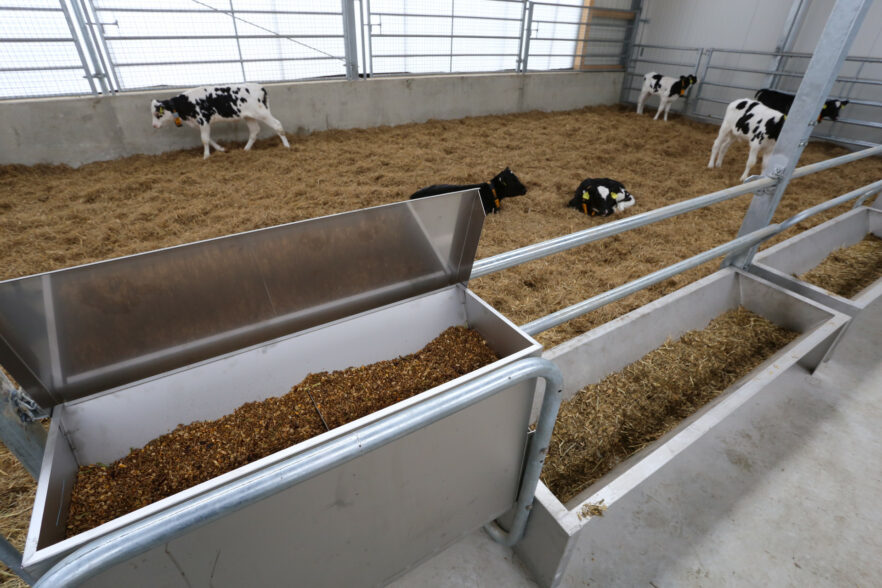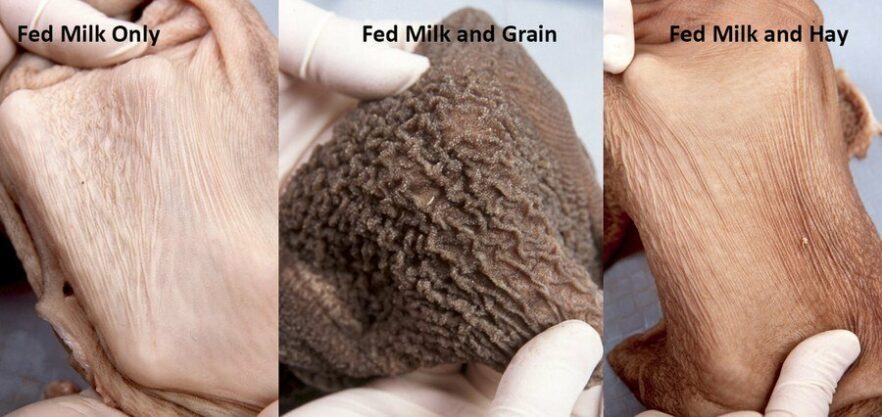Powerfood for calves: concentrate part 1
30. Mai 2022 — General Information, Calf Feeding — #weaning #Power supply #Calf cereal #Concentrated feed #Management #Rumen development #Dry TMR #Growth #GainsOptimum strategies for the early intake of dry food
As ruminants, cattle can ideally use forage as a source of energy and protein. However, this requires a fully formed forestomach system with a well-developed rumen. After birth, it takes up to half a year until a forestomach is completely mature and ready to perform to its full potential.
This article is about
Optimum forestomach development
Since young animals are not able to digest much of the basic feed at this stage, it is important to provide them with a good supply of concentrate. For this reason, there is a widespread belief that only easily digestible concentrate should be used for calves. In fact, butyric and propionic acid, as degradation products of easily digestible carbohydrates, ensure good development of the rumen villi in the rumen. This results in an enormous increase in surface area in the rumen and the volatile fatty acids that are produced during digestion in the rumen can be absorbed perfectly.
However, it has been shown many times that a purely concentrate-based diet for calves during and after weaning is not advisable. There are two reasons for this:
- The rumen needs roughage with well-structured raw fibre in order to positively stimulate the forestomach motor function. The rumen wall is strengthened and a certain stretching effect promotes the size growth of the rumen. What's more, structured roughage elements ensure that the newly developing rumen villi do not stick together.
- A high proportion of easily digestible carbohydrates (from the concentrate) ensures a permanent acidic environment in the rumen. The high amounts of short-chain fatty acids cannot yet be sufficiently stored in the rumen and transferred into the bloodstream. Similar to cows, this latent, subclinical rumen acidosis can also affect calf health and lead to delays in development (lack of weight gain, reluctance to eat, weakened immune system). In the worst case, the problem shifts to the intestine, where the subclinical (without symptoms) becomes clinical acidosis accompanied by diarrhoea. J.K.van Niekerk et al., 2020 University of Alberta
For this reason, young calves should always be offered roughage in the form of hay, good silage or tasty straw in addition to concentrate.
When should I switch to concentrate and roughage?
A newborn calf can only digest milk components. The enzymes in the abomasum are adapted to digest milk protein and lactose (lactase or chymosin and cathepsin). It is only after 3-5 weeks that this changes and the digestive enzymes amylase for digesting starch and pepsin and trypsin for breaking down plant protein begin to dominate.
In fact, it is only after an age of 4 weeks that you notice that the concentrate intake of the calves slowly increases. This could be even later when feeding is intensive (e.g. ad libitum).
Nevertheless, it makes sense to provide calves with roughage during the first two weeks of life. They play with it and start to get used to its smell, taste and texture. Offering concentrated feed at an early stage also has a positive effect on the way the enzyme system develops and promotes the development of the rumen from an early stage (see above). Offering hay in pens, nets or toy balls also encourages the calves to be active.
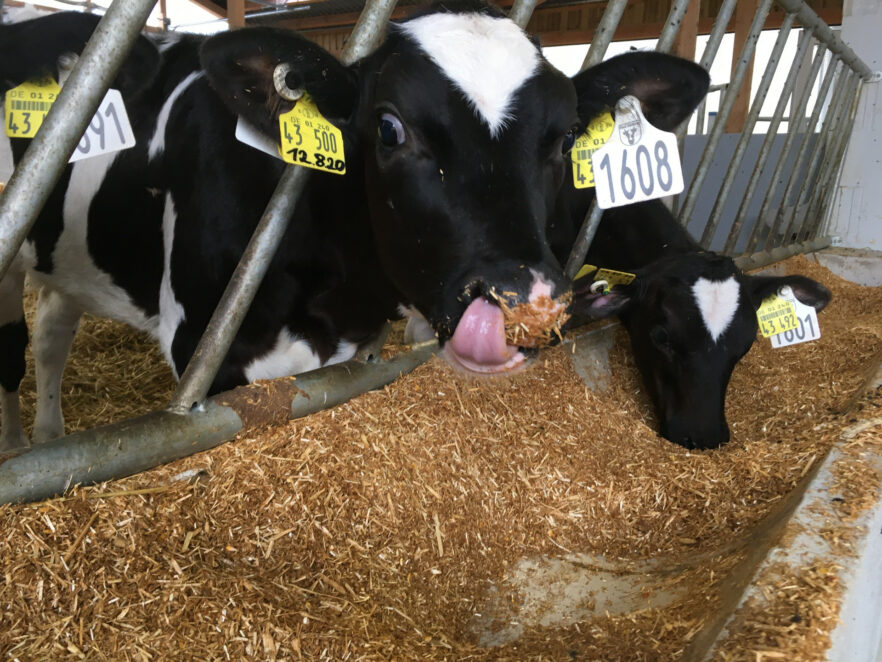
In practice, this is done by offering the calves only a small amount in trays (e.g. in single or twin hutches). It is important that there are no remains that can become damp and mouldy. When feed intake increases, i.e. the bowl is empty at the next feeding, you simply increase the amount of feed provided.
When the calves consume about 1.5 % of their body weight in concentrate, you can start slowly weaning them off milk (e.g. 1200 g for an 80 kg calf).
Don't forget water
It shouldn't really be necessary to point out the importance of the cheapest feed available, but we still see major deficiencies in the supply of water to calves. Whether for reasons of hygiene or simply the fact that there is no water trough in front of many individual huts, one thing is certain –
we are not only legally but also ethically obliged to provide all animals with fresh water and that includes young calves.
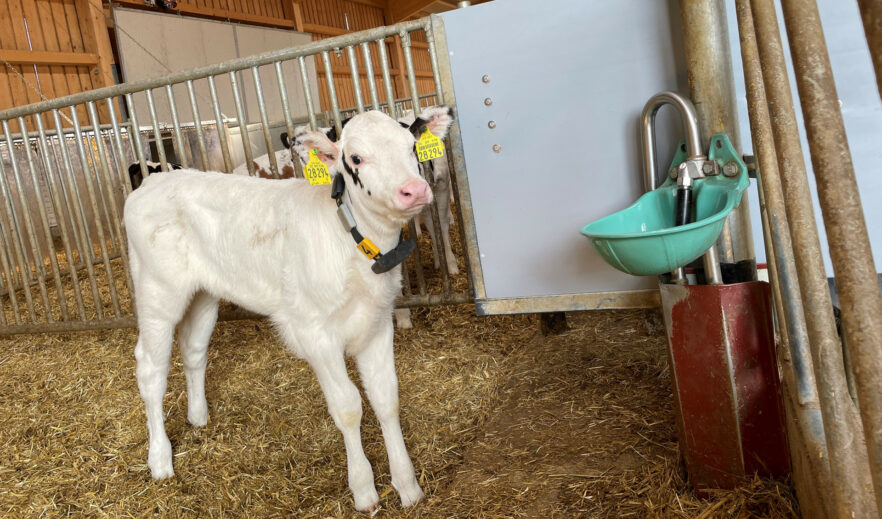
What many people may also overlook is the fact that the rumen needs water to allow the appropriate fermentation processes to take place and a healthy bacterial flora to form. Milk cannot do this even if it is offered ad libitum, because it flows through the gullet directly into the abomasum.
For this reason, you need to offer your calves water right from the start if you are looking to ensure an early intake of concentrate and rapid rumen development.
Switching to “young cattle feeding”
Calf feed or cereals are relatively expensive. The question therefore arises as to when to switch to silage (preferably the high-performance ration of dairy cows). The answer can be found at the beginning of this blog – a heifer's forestomach system is not fully developed until she is about 6 months old. This is why at least high-quality concentrate should be fed until this time. However, you must always keep an eye on animal conditioning. Nevertheless, it is generally true that heifers can and should be fed intensively up to 6 months of age in order to achieve high weight gains during this important phase of their development.
The transitions are important. Feeding silage is difficult in many calf barns due to their design (no space, no access for the feed mixer cart etc.). It is also unclear how to deal with leftover feed, of which there is a lot at the beginning of the transition. What was previously introduced with great effort has to be removed again the next day.
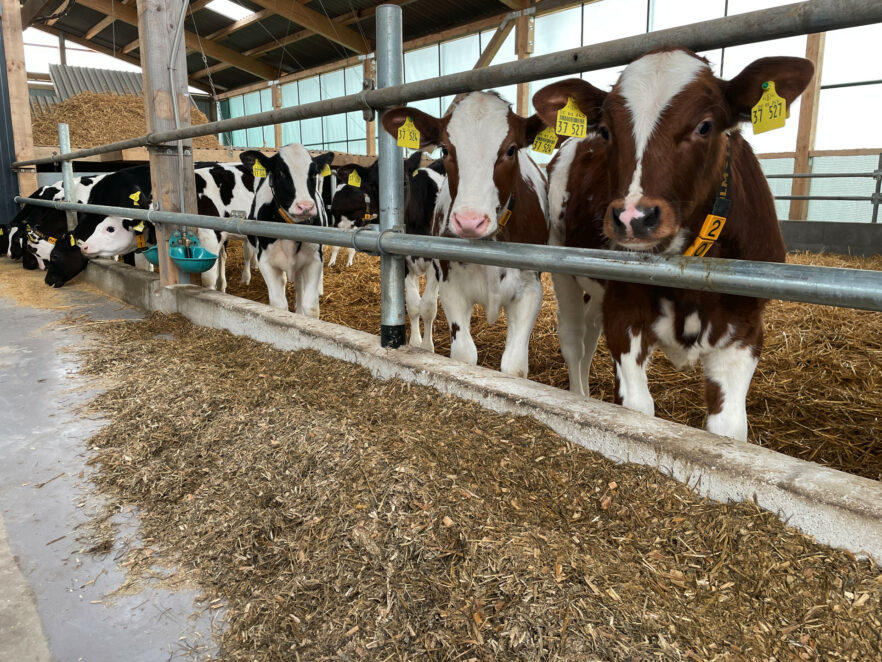
Furthermore, it is not advisable to make too many changes for the animals all at once. Rehousing to the young cattle shed must therefore also be considered. The following approach might be a solution:
- Feed calves in the calf pen with concentrate and hay or dry TMR for 2-4 weeks after weaning is complete.
- After rehousing, the calves in the young cattle barn are offered the follow-up mixture (silage) in addition to the familiar mixture of concentrate and hay or dry TMR. The calf mixture is only weaned off slowly when the calves are taking up the silage ration well.
If silage feeding is not started until the young cattle have been rehoused, the feed not consumed by the calves is not as important as it can be fed to the older young cattle if necessary.
